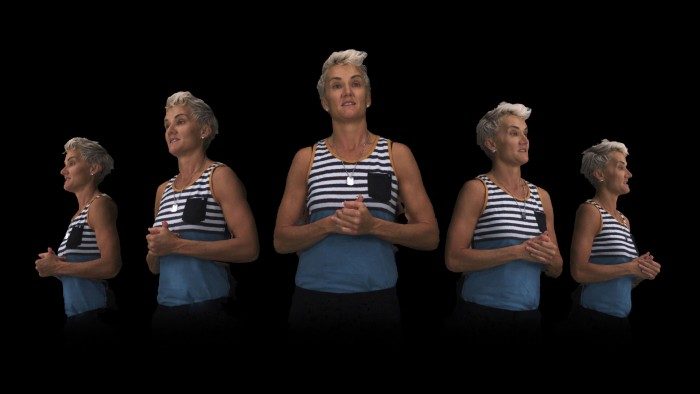8i, a startup based in New Zealand, has unveiled a new 3D / VR Video format based on light field technology. 8i claim to be capturing Light Fields using standard video camera arrays, resulting in video you can view from different angles in virtual reality.
Virtual reality video, cinematic VR, VR movies … the nomenclature is still being defined for a new medium being made possible by the rapid advent of consumer virtual reality. So rapid in fact that the technology is evolving faster then the language.
Virtual reality video experiences are a big deal and it seem, right now, everyone in Hollywood and beyond is scrambling to stake a claim in the wild VR frontier. 8i are another company joining the fray, this time with an innovative approach to capturing immersive video content for use in VR – they call it ‘3D Video’.
The technology involves 2 or more cameras, capturing a subject or a scene from multiple angles and using those viewpoints to construct ‘light fields’ of that scene. The upshot is a video stream that you can positionally move around (with limitations) unlike standard, linear, single PoV content – where your view is restricted to the spot the content was captured.
Whether the system qualifies as ‘light field’ based is up for debate, but the upshot of capturing content using 8i’s system is video far more suitable for creating VR experiences. You can dodge and lean into the scene whilst looking around in 360 degrees.
8i have already released demonstration software you can try, either via your web browser or a standalone Oculus Rift launcher. The first content to appear on the platform is a series of video portraits with personalities speaking direct to the camera.
From what we’ve seen, the system is quite effective, although demo’s thus far seem to be limited to green-screened single-subject content (i.e. a single actor in the frame), so it’s not clear whether the system is capable of capturing full scenes. Also, as the content is shot only from 2 static points of view, you only have information for the side of the actor facing those cameras – with a sort of ghostly tailing off of information the their rear.
You can grab the Oculus Rift downloader for PC here and you can check out the #100Humans portrait series in your web browser here.
We’ll be reaching out to 8i to help fill in some of the technology blanks we have right now. In the mean time, 8i’s solution does appear to offer a low cost solution to immersive video. It’ll certainly be interesting to see what type of content 8i see their technology being suitable for.








